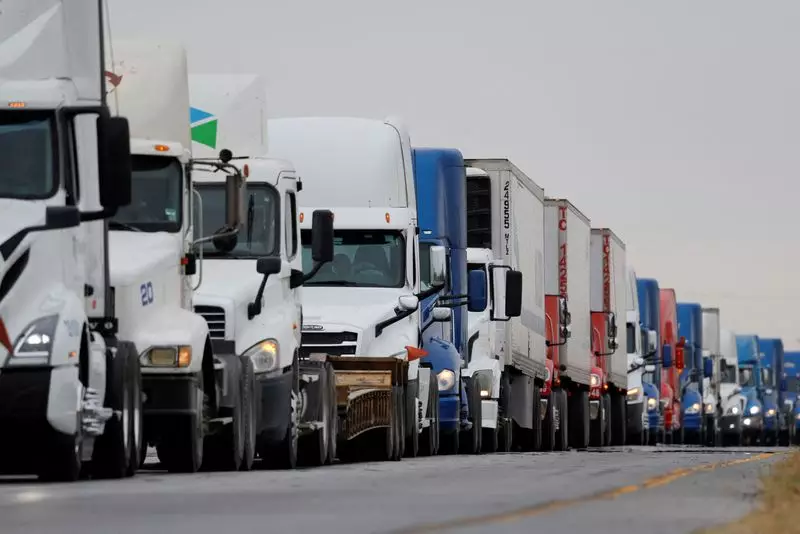The Mexican economy, recognized as Latin America’s second-largest, is currently navigating a series of challenging waters. Analysts predict a continuation of sluggish growth throughout the year, projected at a mere 1.2%. This figure is in stark contrast to the previous year’s growth of 1.6% and raises concerns about the long-term viability of economic stability. The forthcoming political shift in the United States adds an unexpected layer of complexity to the situation, putting additional pressure on Mexico’s economic fabric. As the nation awaits the inauguration of President-elect Donald Trump, there is a palpable sense of apprehension regarding potential policy changes, especially threats of steep tariffs on imports.
Trump’s administration has expressed intentions to impose aggressive tariffs, a prospect that rattles the delicate economic balance that Mexico currently enjoys with its northern neighbor. The existing free trade agreement between Mexico, the U.S., and Canada has been a cornerstone of Mexico’s economic strategy, and any significant alteration to this framework would have immediate and far-reaching implications. Economists are closely monitoring the situation, recognizing that the proposed 25% tariffs could significantly hinder Mexico’s export-oriented market. Such a scenario would not only exacerbate the current economic stagnation but also deter potential foreign investments that are crucial for recovery and growth.
Three primary factors contribute to the bleak economic outlook for Mexico: reduced consumer spending, declining exports, and weakened fixed investments. The uncertainty surrounding U.S. political agendas creates a trepidation among investors, which in turn stifles capital inflows that are essential for stimulating economic activity. The Mexican government, led by President Claudia Sheinbaum, has made attempts to mitigate some of these concerns by taking proactive measures to address issues such as illegal immigration and drug trafficking—areas of significant concern for U.S. policymakers. Furthermore, in response to Trump’s accusations regarding Chinese goods being funneled through Mexico, the administration has proposed plans to limit imports from China, trying to ease tensions and maintain favorable trade relations.
Despite the heightened stakes, the economic landscape is fraught with limitations concerning fiscal and monetary policy. The Bank of Mexico, commonly referred to as Banxico, has already reduced its benchmark interest rate from a historical high of 11.25% to 10%. As the central bank considers its next moves, speculation abounds about how to best support economic activity in the face of potential tariffs. Responses from economists indicate a cautious approach, with the majority suggesting that Banxico should tread carefully, maintaining the existing strategy of moderate easing rather than taking drastic measures.
The central bank’s ability to proactively adjust interest rates is curtailed by the realities of rising global bond yields and an overarching need for fiscal prudence. Compounding these challenges is the ongoing global economic climate, which is characterized by increasing interest rates and inflationary pressures. In light of this complexity, any significant shifts in policy could lead to unpredictable consequences, not only for Mexico but also for the broader region.
In the midst of these turbulent times, the potential for nearshoring offers a glimmer of hope for Mexico’s economic revival. This strategy could leverage the country’s geographical proximity to the U.S. as companies consider relocating operations to avoid the newly proposed tariffs. However, investor hesitation and political noise continue to dampen the enthusiasm surrounding this opportunity. The Mexican government must navigate these challenges adeptly, fostering a stable environment to attract much-needed investment.
As Mexico braces for the potential repercussions of U.S. policy shifts, it finds itself at a crossroads. The upcoming political changes in the U.S. could redefine trade relationships in North America, and how Mexico responds to these challenges will determine its economic trajectory in the coming years. The need for well-considered, strategic responses has never been more critical as the nation seeks to overcome the hurdles currently hindering its economic potential.

